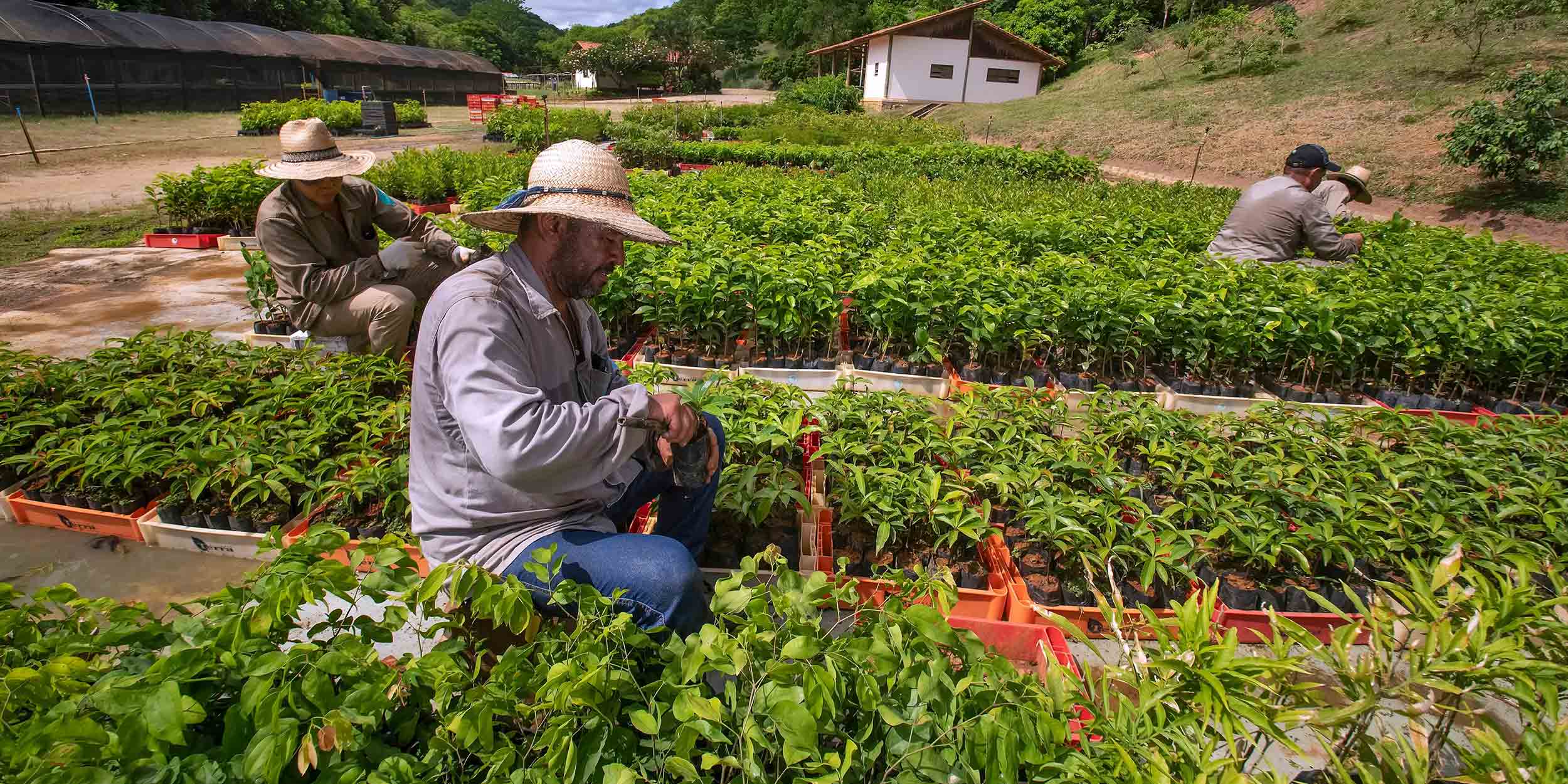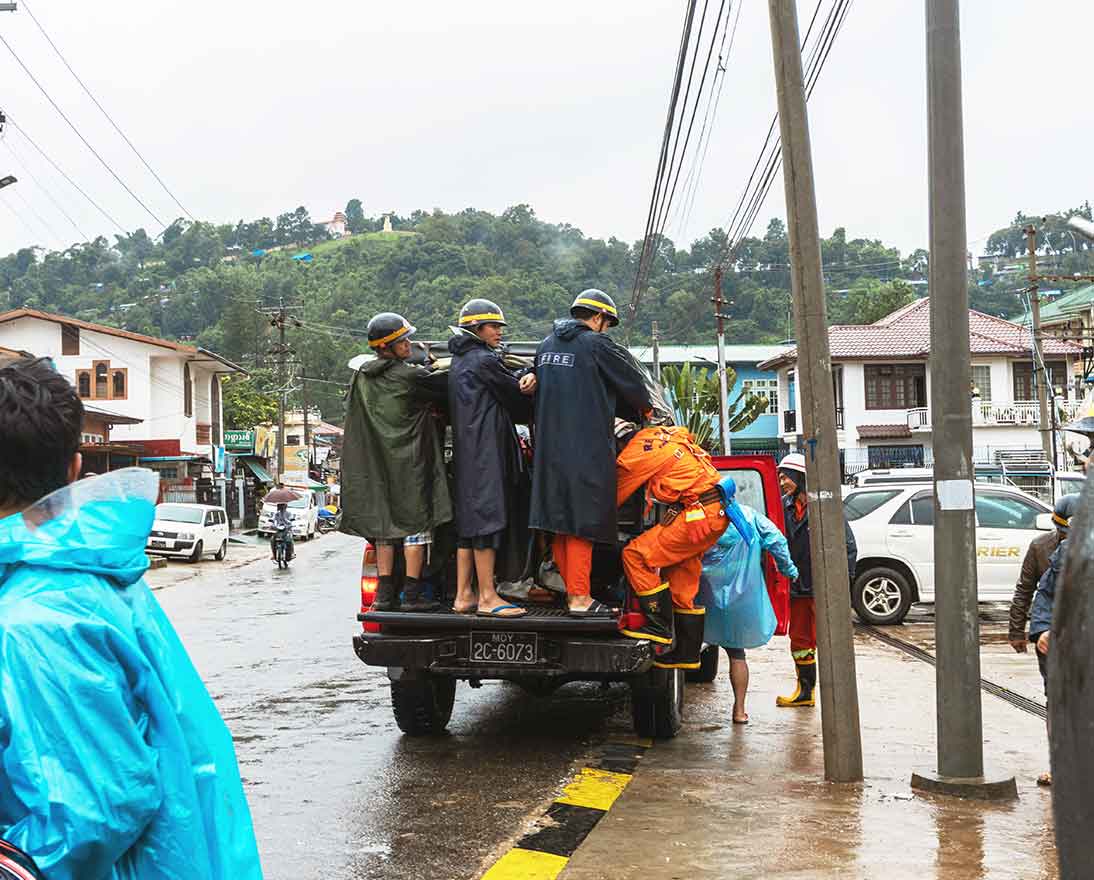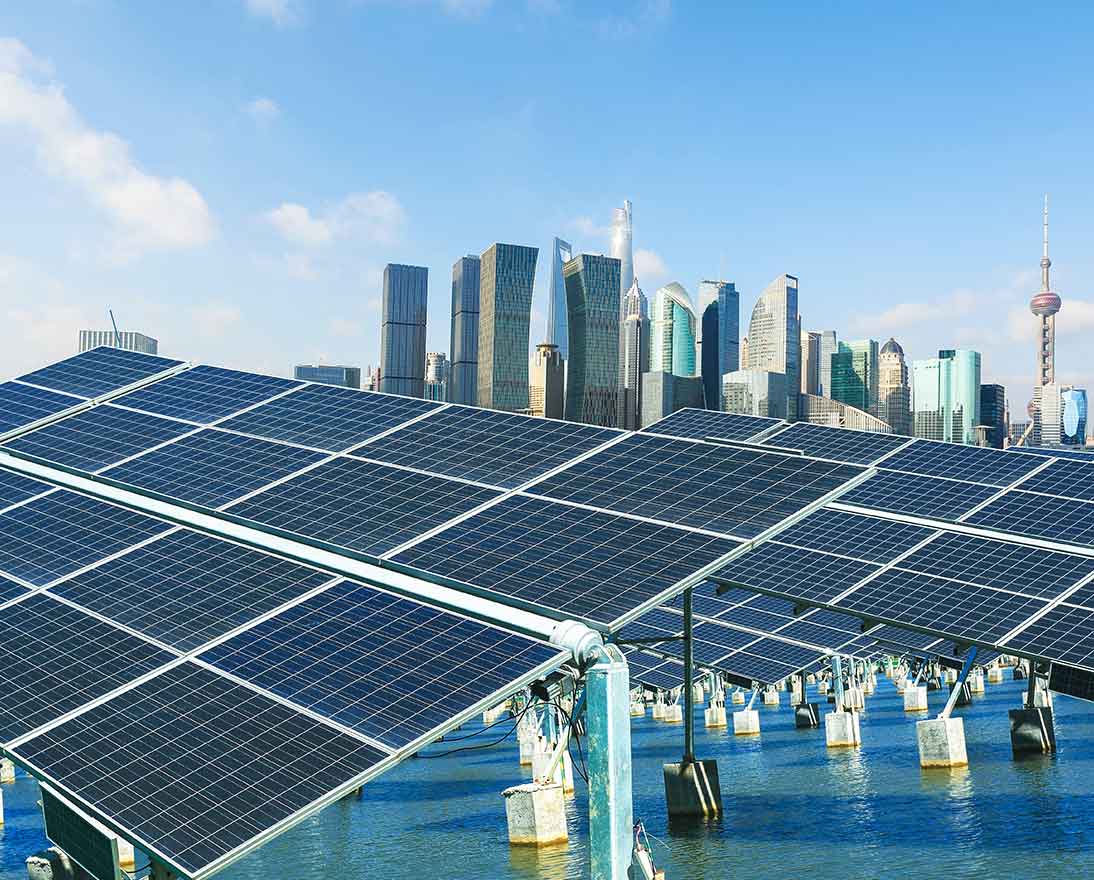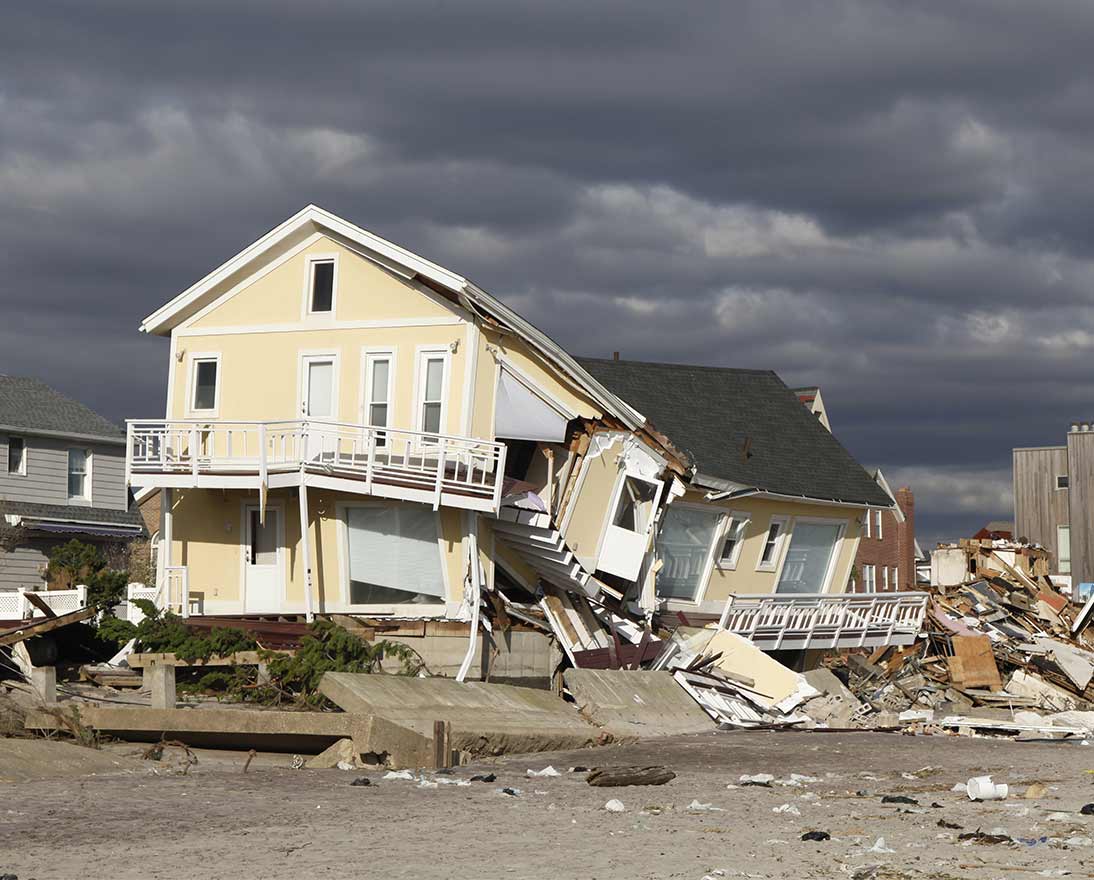The Global Shield against Climate Risks: From Ambition to Reality
Climate resilienceArticleNovember 17, 202211 min read
Michel M. Liès, Chairman of Zurich Insurance Group and chair of the Insurance Development Forum (IDF) shares his thoughts on the Global Shield against Climate Risks and the key role the insurance industry plays in climate risk adaptation and resilience building.
We can now begin to digest the implications of surviving the global pandemic. However, the clock is ticking on a much larger existential threat to our way of life. The ever-changing climate has more implications across all spheres of our cherished existence and its implications will be felt for generations to come if we fail to act now. Drawing parallels with the pandemic, the scale and urgency for communities, governments and all levels of society – including the private sector – to come together and tackle this challenge is of the utmost importance. The fact is that no country or locality will be immune from the physical and economic consequences. The well-timed and globally orchestrated Global Shield against Climate Risks represents one of the key ingredients in this battle.
The entry of the Global Shield, championed by the German Government through its leadership at the G7 together with the Vulnerable Twenty (V20) Group of Ministers of Finance of the Climate Vulnerable Forum, creates much-needed impetus for the momentum generated in the private sector to support a resilient future. The Global Shield gathers together activities in the field of climate risk finance and preparedness under one roof. Under the Global Shield, solutions to provide financial protection will be devised that can be swiftly implemented if climate-related damages occur. The objective is to make the global architecture on Climate and Disaster Risk Finance and Insurance more systemic, coherent and sustained.
Pockets of innovation are encouraging and many initiatives have sprung up to channel action in individual areas of the globe. What is currently absent is the momentum and the pathway to scale up projects and achieve real outcomes that can dent the protection gap that stands at over USD 1.4 trillion.1 At risk of stating the obvious, the escalating frequency and severity of extreme weather-related events – from droughts in the Horn of Africa to record heat waves in Europe and floods in Pakistan – have shone a brighter spotlight on climate-related risks.
A new way of thinking and acting is required and one that brings risk management to the fore. This needs to include bringing the often-humble Insurance Industry with its risk management experience into the conversation. The emphasis on risk will drive transparency in risk ownership and build greater resilience by availing resources for planning and financing in advance of an event.
We have allowed Covid-19 to surprise us. We shouldn’t allow other events to creep up on us again. That means we need to get much better at tracking risks and testing preparedness. Similar to the pandemic, this dilemma is too big for any country or company to tackle alone but roadmaps for action exist. They are continuously being refined and improved, with a marked acceleration over the past 12 months.
The Global Shield is strategically important for the private sector and the world. Its aims are ambitious, implementation will be challenging, and the impact could potentially be revolutionary for millions of people. Some key features need to underpin this noble-minded program.
Communication of risk
As the name suggests, the Global Shield against Climate Risks presents an opportunity to galvanize the world and for the actors in the field of climate-risk management to coalesce under one umbrella. It’s natural for the insurance sector to pay considerable attention to the real and perceived risks and threats. Emphasis is placed on the core role of insurance as society’s risk manager, in order to understand, measure and mitigate the threat before it becomes unmanageable. In addition, the industry’s underwriting and advisory functions can be further leveraged to encourage positive action on climate change by influencing the behavior of individuals, businesses and governments2.
Influencing behavior starts with appropriate communication and being consistent with the messaging. The scientific community has been playing its part through the IPCC reports and various other forums. As actors in this space, the cohesion afforded by the Global Shield offers a unique platform to bring the dialogue front and center to the decision-makers. Risk management of good and bad risk is the core of our work in insurance and our reason for being. As an industry, we need to articulate this risk more broadly and aim to formulate this through the Global Shield.
Shielding decision-makers from the vagaries of political seasons and the relatively short-term nature of the current decision-making structures, the enabling environment created by the Global Shield will yield to a decisive approach in long-term planning. The Insurance Industry is at the center of society’s understanding of physical and transition risk, and taking a long-term view. We play a role as a catalyst in providing the necessary impetus once that understanding of risk is clearly laid out and we stand ready to drive innovation in allocating capital both on underwriting and investment. The policy framework setting the stage for clear market signaling translates into innovation and competitive market forces that ultimately mobilize private finance.
No more pilots. Time to scale
The “new normal” has a special place in the realm of overused phrases. However, this statement needs no embellishment when we speak of the new normal in relation to climate change. While humans have long adapted to feast or famine, when it comes to water we are underprepared for extreme events – the “mega” droughts, storms, and floods that used to occur once in a hundred or a thousand years. But in this decade alone, we witnessed the highest temperatures ever recorded. Floods displaced millions in Pakistan, and catastrophic storms such as Hurricanes Sandy and Maria are becoming more frequent. Extremes of rainfall – particularly rapid see-saw changes from dry to wet spells – severely damage crops, destroy infrastructure, and destabilize livelihoods. But this is our planet’s new normal and we must adapt to survive.
As these events become more extreme, we must develop solutions that match the problems we are facing. We must develop a greater understanding of the risks we encounter. Advancements in risk modelling will need to be scaled up to match the urgent need for deepened risk analytics capabilities worldwide. We have a perfect illustration and platform for increased risk insights through the Global Risk Modelling Alliance (GRMA). The public and private sectors came together in the GRMA to form a powerful engine responding to the needs expressed by the V20 countries to freely share Risk Understanding and Risk Knowledge, especially targeting the developing world, highlighting the ownership and root of knowledge emanating from the source. The GRMA needs to grow and expand in line with the ambitions of the Global Shield. Insurers have a long track record of helping customers to mitigate risk. Greater risk understanding will enable countries and societies to access information on how to manage risk better and build resilience. This is needed now more than ever before. Uniting both the open access to data with private-sector expertise and local knowledge, we have the opportunity to unleash powerful synergies that can yield real impact for those most affected.
Once we have the right models in place and the risk engineers to correctly assess and configure the risk, the obvious next step is the action we need to take in relation to these risks. It must be stressed that these drought, flood and cyclone risks are already being ‘paid’ for in a very inhumane and inefficient way.
In simple terms, we need solutions that have long been at the fingertips of the private sector and they should be unleashed universally for the benefit of society as it battles this one-in-a-generation challenge. To this end, the ongoing work undertaken by the Working Groups of the Insurance Development Forum (IDF)3 needs to be the focus of attention in order to offer potential roadmaps for the future. For example, IDF’s Sovereign and Humanitarian Working Group is gaining momentum across the Sovereign States and bringing insurance solutions, including parametric solutions, to countries and communities. The distinctiveness of the Tripartite Agreement4 is not inherent in the products but in the ability to bring together both the public and private sectors through the Insurance Industry, the United Nations and Sovereign States in implementing live programs. The Tripartite Agreement aims to reach over twenty countries with solutions by 2025 with the support of the German Government. We need to double this ambition as a minimum. In addition, the IDF’s Inclusive Insurance Working Group is contributing to build inclusive insurance markets targeting the underinsured and under-protected. Bringing the United Nations agencies, the private sector and sovereign actors together at the table, empowers these partnerships to build powerful coalitions that have the necessary capacity to tackle the complex problems we are confronted with.
These are only a few examples of many initiatives being championed worldwide, with the industry taking a proactive lead, thinking bolder and bigger, and daring to be less humble about the skills and expertise that the actors in the industry bring to the table for the benefit of communities and sovereign states.
The Global Shield offers an opportunity to implement a decisive and pragmatic step towards protecting the most vulnerable and at a scale never seen before, supported by the private sector through the insurance community.
Forward-looking
In lauding the ambition of the Global Shield, we need to view the situation through a pragmatic prism because climate-related catastrophes are increasing in number and severity. While efforts to mitigate the impact of climate change continue, many of its effects are already inevitable. Society must adapt to address the financial and human costs of these events. This requires improving our ability to model and predict catastrophe risk, to make the right decisions about pre-risk measures and risk preparedness, and to re-double our disaster reduction measures.
For this to become a reality, we need a paradigm shift to a new architecture for the response system. The current system has been severely tested in various events and has demonstrated a lack of speed and flexibility to meet future challenges. This commitment requires a shift from the present passive awareness of risk to a proactive risk management stance.
The global funding response to Covid-19 has been substantial, USD 125 billion, 64% of which was disbursed in the first year of the crisis5. However, the scale of the situation means that although this amount is sizeable it is unlikely to come even close to meeting needs and additional funds are required. The Global Shield offers financial firepower but more money alone will not solve the problem. We also need a different approach to financing – one that involves more financial preparedness and planning before a crisis occurs. In the absence of this, the piecemeal singular country approach results in highly inequitable outcomes.
From natural catastrophes to global pandemics, risk management shortcomings have been frequently highlighted in recent years. The consequences have been devastating: lives lost or damaged, property destroyed, claims totaling billions of dollars and an increasingly polarized world created through rising uncertainty and insecurity. What we don’t often hear about is risk management success. The Global Shield might well offer an avenue to highlight success. In turning the Global Shield from an ambition to reality, we need to give a deserved chance to our conviction that we can make a difference with our efforts to achieve our shared vision of protecting the most vulnerable in our society and building resilience.
This article was originally published in the InsuResilience Magazine, November 2022 issue.
Sources:
1 Swiss Re Sigma Resilience Index 2022.
2 Where next for sustainable insurance? Five priorities for the next decade. Available here.
3 he IDF is a public/private partnership led by the insurance industry and supported by international organizations. Further information here.
4 Further information on the Tripartite Agreement, a partnership between the German government, the United Nations Development Programme and the IDF. Available here.
5 Yang, Y., Patel, D., Hill, R. V., and Plichta, M. (2021) ‘Funding Covid-19 Response: Tracking Global Humanitarian and Development Funding to meet Crisis Needs’, Working paper 5, Centre for Disaster Protection, London.
Climate Resilience
Our Climate Resilience experts help you identify and manage climate risks, and prepare you for climate reporting.





